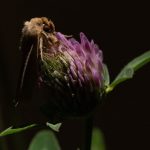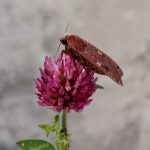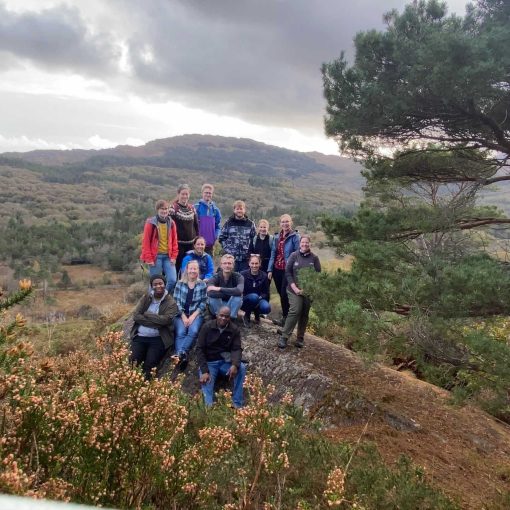Moths complement bumblebee pollination of red clover: a case for day-and-night insect surveillance
This study has captured moths lending a hand to the bees, by pollinating wildflowers.
Often branded as textile-troublemakers, moths are misunderstood. Just a handful of species can damage our clothes, while thousands more are honest plant-eaters. What’s more, recent discoveries highlight how moths help plants to produce fruit – through the miracle of pollination.
Scientists of the RangeX team study the ancient act of pollination with a futuristic twist. Working in wildflower meadows in the Swiss Alps, they used 24-hour surveillance cameras to photograph insects through an entire summer.
Caught on camera
This research uses insect surveillance cameras to reveal unseen stories of flowers and their pollinators. The focus of the latest study is red clover, a valuable crop and wildflower species. Since the early 1900s, scientists have known red clover as a favourite flower of bumblebees.
However, the cameras captured something unexpected: Moths visited red clover flowers almost as much as bumblebees. In fact, 34% of visits were made by moths. The Large Yellow Underwing moth, Noctua pronuba, did most of that work, and enjoyed longer flower visits than bumblebees.
Shedding light on moths
This is not the first case of moth pollination – far from it. In fact, many moth species are known pollinators. A famous example is Darwin’s moth. That species went so far as to evolve a tongue 3× longer than its body, all to drink nectar from a bizarre Madagascan orchid.
However, this open-access study, published in Biology Letters, shows how much is left to learn about night-time pollination. Jamie says: “If we don’t consider the pollinator night-shift, we reach the wrong conclusions. Moths contribute to seed production in red clover, yet we gave all the credit to the bees”.
The research also shows how cameras can transform pollinator monitoring, providing masses of valuable images from sites that are hard to reach. “Flowers get very few opportunities to be pollinated” says Jamie. “Observing flowers to count insect visits is like observing entire human lifetimes to count weddings. These events happen very rarely, if at all. You need to be stubborn and systematic, which is easier to do if we use cameras”.
There is also the exciting prospect of automatic – that is, computer-based – pollinator detection. Jamie says: “Computers can identify moth and bee species faster than ever before. By bringing artificial intelligence into insect surveillance, we will solve even more pollination mysteries in the coming years”.






